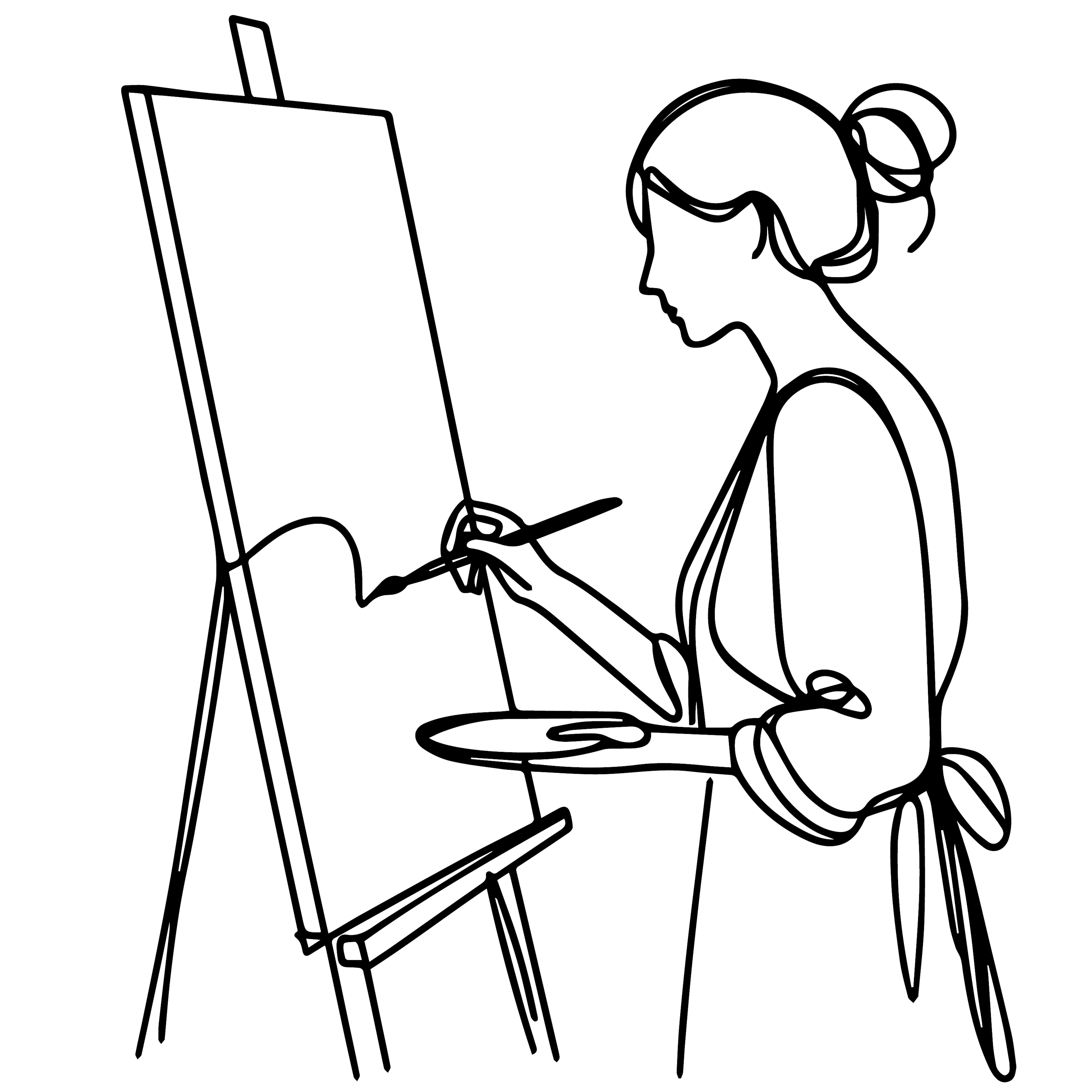
Women in art: rediscovered female artists
Objectives:
The learners examine the role of women in art history and reflect on why many female artists were overlooked or forgotten for a long time. Learners analyze and question the structures that have delayed the recognition of various women artists.
Content and methods:
The worksheet introduces the life and work of a female artist and shows why she was only recognized late despite her innovative works. Learners examine historical and social reasons for the marginalization of female artists and reflect on how the art world could change if women had received equal visibility and support from the outset. Through image analysis, expert statements and reflection questions, a critical examination of gender roles in art is encouraged.
Competencies:
- Analysis and interpretation of works of art in a historical and social context
- Critical reflection on structural inequalities in the art world
- Development of own questions on the representation of women in art history
Target group and level:
Year 10 and above
50 other teachers use this template
Target group and level
Year 10 and above
Subjects
Women in art: rediscovered female artists

The Artist Hilma af Klint – A Forgotten Pioneer of Abstract Art

Have you ever heard of the artist Hilma af Klint? Probably not, as her groundbreaking work remained in the shadows for many years. Hilma af Klint was a Swedish painter and mystic whose artwork is considered among the first abstract pieces in Western art history, predating the works of Kandinsky, Malevich, and Mondrian.
Af Klint's art diverged significantly from the naturalistic and figurative styles prevalent in her time. She created abstract compositions filled with geometric shapes, vibrant colors, and esoteric symbols. Her approach to art was deeply intertwined with spiritualism and Theosophy, and she often participated in séances, believing she was guided by higher spirits in her creative process.
The uniqueness of af Klint's work lies in its spiritual depth and symbolic complexity. She viewed her paintings not merely as aesthetic expressions but as visual manifestations of spiritual and philosophical ideas. This was a bold departure from the conventional art of her era, making her a true pioneer of abstract art.
While af Klint's contemporaries explored early forms of modernism, she delved into abstraction, producing works that spoke to the unseen forces of the universe and human consciousness. Her series "The Paintings for the Temple," consisting of 193 pieces, is a testament to her visionary approach, depicting various stages of life, spiritual evolution, and cosmic order.
Hilma af Klint's contributions to art are invaluable, offering a profound perspective on the fusion of art and spirituality. Her abstract creations invite viewers to explore the deeper dimensions of existence, positioning her as a significant figure in the history of abstract art.
📝 Have you ever heard of the artist? If so, how did you hear about her?

Introduction
In this worksheet, you will get to know the artist and her work. You will look at one of her best-known works and examine why she was forgotten for a long time.
📌 Here, an art historian explains why the artist remained unknown for a long time. Read the text or listen to the audio on the next page.
Hello, my name is Dr. Jane Williams, an art historian specializing in the contributions of women in art history. Today, I would like to address why Hilma af Klint, despite her pioneering work in abstract art, did not achieve the fame she deserved during her lifetime.
Hilma af Klint's obscurity can be attributed to both personal choices and broader structural issues related to her gender and societal norms. On an individual level, af Klint herself chose to keep much of her work private. She believed that the world was not ready to understand her abstract art and spiritual insights. Consequently, she stipulated that her works should not be publicly displayed until at least 20 years after her death. This decision undoubtedly delayed the exposure of her groundbreaking art to a broader audience.
However, the more significant reasons for her lack of recognition are deeply rooted in the societal and structural barriers women faced in the art world during her time. The art world was predominantly male-dominated, and women artists often encountered substantial obstacles in gaining recognition and exhibiting their work. The established art historical narrative largely focused on male artists like Kandinsky, Malevich, and Mondrian, who were celebrated for their contributions to abstract art. Af Klint's work did not fit neatly into this narrative, leading to her exclusion from mainstream art historical accounts.
Sexual discrimination in the art world was rampant, and women were largely considered secondary participants in the artistic community. They were often relegated to painting naturalistic and figurative styles, and their ventures into abstract art were not taken seriously. Women like af Klint, who diverged from these conventional styles and explored spiritual and esoteric themes, faced even greater marginalization. Her involvement in séances and Theosophy, and the belief that her art was guided by higher spirits, were unconventional and not widely accepted in the art community at the time. This further contributed to her work being overlooked and misunderstood.
Moreover, unlike her male contemporaries, af Klint did not actively promote her work or seek to align herself with influential art circles. The documentation and scholarly study of her art were limited until much later, hindering her visibility in academic and artistic discussions. The lack of promotion and documentation meant that her contributions were not recorded in the same way as her male counterparts, perpetuating her absence from the established art historical narrative.
It was not until the late 20th and early 21st centuries that af Klint's work began to be rediscovered and re-evaluated. Exhibitions and scholarly research have gradually brought her contributions to light, but this has been a slow process, and she still remains less known compared to other abstract artists.
In conclusion, Hilma af Klint's lack of fame and recognition can largely be attributed to the structural barriers women faced in the art world, compounded by her personal choice to keep her work private. Her story highlights the need to re-evaluate and broaden our understanding of art history to include the significant contributions of women artists who have historically been marginalized.
Thank you for your attention.
Dr. Jane Williams
🔊 Here you can find the audio of the art historian.
